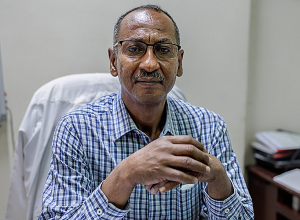
European incarceration rate increased following the end of Covid-19 lockdown measures: Council of Europe’s annual penal statistics released
Support A1+!The end of lockdown measures to tackle the Covid-19 pandemic produced a rebound effect in the incarceration rates in many European countries between January 2021 and January 2022: the median incarceration rate rose by 2.3% in countries exceeding one million inhabitants, according to the Council of Europe’s Annual Penal Statistics on Prison Populations for 2022, released today
The prison administrations of Bulgaria (-8%), Estonia (-6.3%) and Germany (-5.5%) were the only three to report a noteworthy decrease in their incarceration rates in countries exceeding one million inhabitants. At the same time, 16 experienced a substantial increase: Slovenia (+23%), Finland (+15%), France (+15%), Northern Ireland (UK) (+13%), Montenegro (+12%), Croatia (+10%), Türkiye (+9.2%), Sweden (+8.2%), Albania (+8.2%), Hungary (+7.9%), Armenia (+7.9%), Latvia (+7.3%), Romania (+6.5%), Poland (+6.1%), North Macedonia (+5.8%), and Denmark (+5.5%). In other 24 prison administrations, the prison population rates remained stable.
In the previous year, from January 2020 to January 2021, the overall European incarceration had fallen due to the decrease in street crime in the context of the movement restrictions during the pandemic, the slowing down of the judicial systems, and the implementation of release schemes in some countries.
“Throughout the last 12 years, the average European incarceration rate has slowly but consistently fallen. That drop was intensified during 2020 as a consequence of the Covid-19 lockdown measures. Therefore, the increase in 2022 reflects a return to relative normality in social life and the functioning of the European criminal justice systems. Despite that increase, the European incarceration rate in 2022 is still lower than that observed at the beginning of 2020, before the pandemic. This suggests the continuation of the consistent decline observed since 2011”, according to Professor Marcelo Aebi, Head of the SPACE research team from the University of Lausanne.
On 31 January 2022, there were 981,575 inmates detained in the 48 prison administrations of Council of Europe member states that provided this information (out of 51), representing a median European prison population rate of 104 inmates per 100,000 inhabitants. Due to the Russian Federation´s exclusion from the Council of Europe, the survey does not contain data about its prison administration, which accounted for one third of the total European prison population in previous years. To maintain consistency in trend analyses, all European averages and median rates from prior reports that are included in this one were recalculated without the Russian Federation.
The countries with the highest incarceration rates on 31 January 2022 were Türkiye (355 inmates per 100,000 inhabitants), Georgia (237), Azerbaijan (217), Hungary (194), Lithuania (191), Poland (190), Slovak Republic (187), Albania (176), Czech Republic (175) and Latvia (172). Not considering countries with less than 1 million inhabitants, the lowest incarceration rates were found in Finland (50), the Netherlands (54), Norway (56), Cyprus (66), Slovenia (66) and Germany (67).
Overall, in Europe, prison density grew by 4.8% from January 2021 to January 2022 (from 87.4 to 91.6 inmates per 100 places available). Seven prison administrations reported a prison density of more than 105 inmates per 100 places, an indicator of severe overcrowding: Romania (124 inmates per 100 places), Cyprus (118), France (115), Belgium (115), Türkiye (113), Greece (108) and Italy (107). Other prison administrations with very high prison density were Croatia (103), Slovenia (102), Austria (100), Sweden (100), Hungary (99), Scotland (UK) (97), England and Wales (UK) (97), and Denmark (97).
On average, from January 2021 to January 2022, the proportion of prisoners serving sentences for theft fell by 8.8%, whilst those sentenced for drug-trafficking-related offences increased by 3.5%. Drug offences continued to be the most common main conviction among prisoners; these offenders constituted 19% of the prison population, followed by theft (15%) and homicide or attempted homicide (14%). Prisoners whose main sentence is related to road traffic offences comprised 4.6% of the prison population, whereas 3.9% had been convicted for economic or financial crimes.
As of 31 January 2022, the average age of inmates in European penal institutions was 38 years. The lowest average ages were observed in Bulgaria (31), Denmark (34) and France (35), while the highest were found in Georgia (44), Italy (42), Portugal (41), Estonia (40) and Spain (40). Of all inmates, approximately 16.5% were over 50, and 3% were 65 years or over. Women accounted for 5% of the prisoners.



